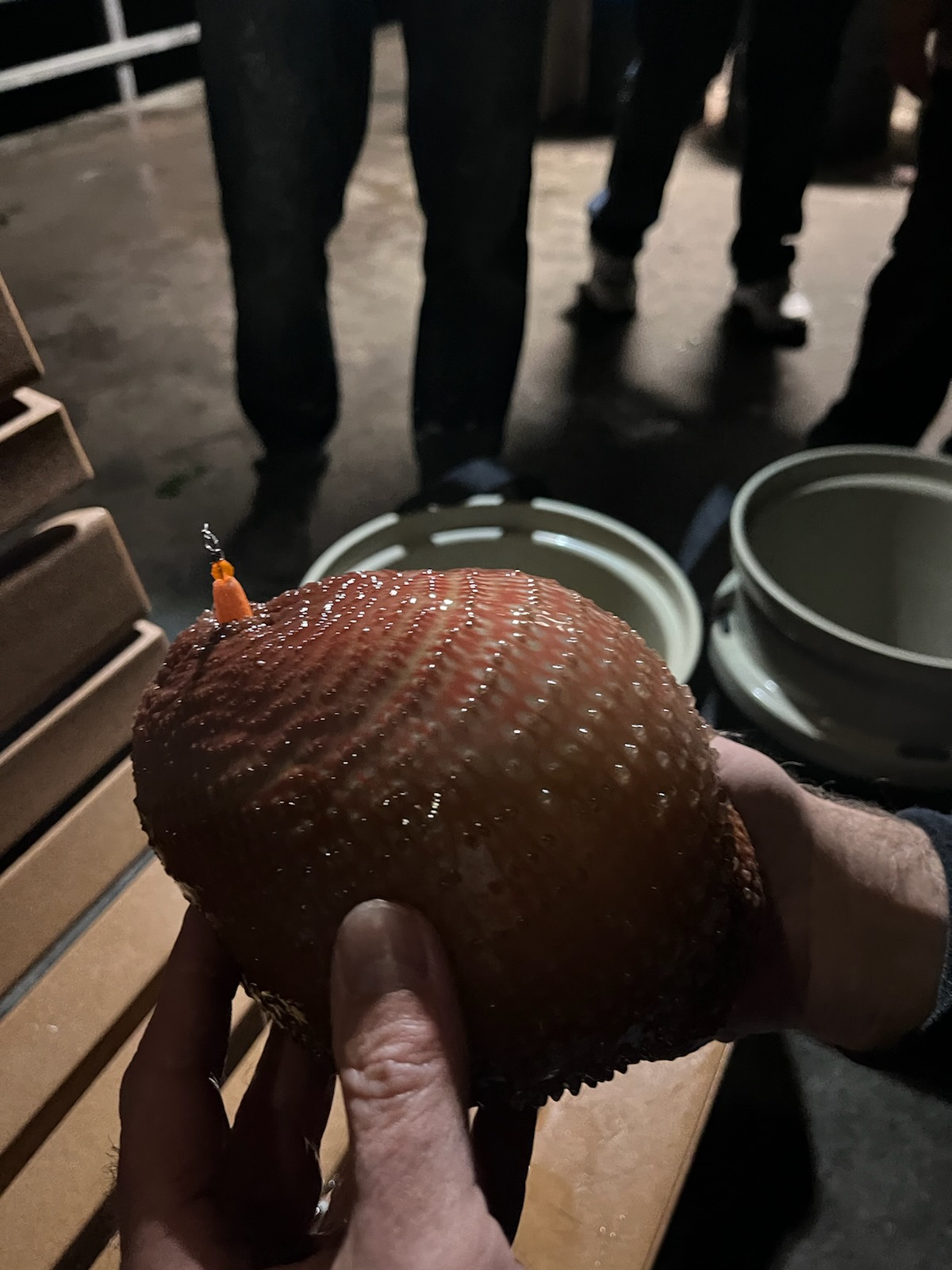On Saturday night we decided to try our hand at squidding at the Edmonds pier. Neither of us had ever been there before, but it’s a pretty fun place. It’s quite a large pier, high above the water with ample seating and several lit, sheltered, fish cleaning stations along it. It seemed like a fun family atmosphere, and there was a group of four or five children running around the way children used to before screens. Being a bit early in the season it wasn’t that crowded yet; I understand that by November we’ll be shoulder to shoulder with other fishermen. I’ve seen people crab from docks in other places with limited success, but people here were actually catching them. What really surprised us is that one lady had actually caught a bucket full of coonstripe shrimp using a small shrimp pot. We tried to catch them from the boat a couple of months ago and failed; we never imagined you could catch them right off an urban pier.
We had brought nothing but two light kokanee rods, two buckets, and our tackle box. For tackle we used “stacked” squid jigs about 12 inches apart. Squid jigs are specialized cylindrical devices with a ring of hooks all the way around them. You don’t need bait to catch squid, but you do need a light source to attract them. Serious squid fishermen bring generators and flood lamps to point into the water, but we would rely on the light from a fish cleaning shelter. Soon after we arrived, a kind man gave us recommendations for how we could improve our rigs. There was no jealousy among fishermen here, just the fellowship of strangers. We dropped our lines and tried to copy the jigging motion being used by the more experienced. We only saw one person catch a squid all evening, but it’s early in the migration. Pacific Squid actually migrate into Puget Sound from the ocean every year to spawn, and they only live about 18 months. They are just now starting to reach Edmonds. They grow to 4 to 12 inches long, with the larger ones being seen later in the season. The daily limit is a generous ten pounds each.

At one point my girlfriend got her rod stuck on something on the bottom, and worried we’d have to cut the line. I took over, increased the drag on the reel, and started slowly bringing it up. Whatever it was, it was actually coming up but it was very heavy, so we started pulling the line up by hand. When we finally pulled it the fifty feet up to the guardrail, we found a huge red anemone that was much bigger than the rock it was attached to. The jig had landed square in its mouth and it had closed around it tightly. Only the very top of the jig and the fishing line were visible, the rest had been swallowed up by the unworldly creature. Anemones look like beautifully colored flowers while underwater, but when exposed they look like great slimy blobs.
We suddenly attracted a crowd of curious onlookers who started snapping photos of it like paparazzi while I held it in my hand. I heard comments like “WTF? I’ve never seen such a thing”. I set it down on a bench, and the children crowded around to see it. They asked if they could touch it and I said yes, and explained to them what an anemone was. The fishermen urged me to cut my $6 squid jig out of it, but I didn’t feel like hacking a random sea creature to bits just then. I reasoned that if I simply cut the line and dropped it back down with the jig still in its mouth, there was at least a remote chance that it might release it and survive. The children started arguing over who would get to drop it back in; a little girl won the argument and performed her duty. We came home without squid but with valuable experience, the first piece of which was to stay clear of the bottom while jigging.
Discover more from Mini Montauk Adventures
Subscribe to get the latest posts sent to your email.


